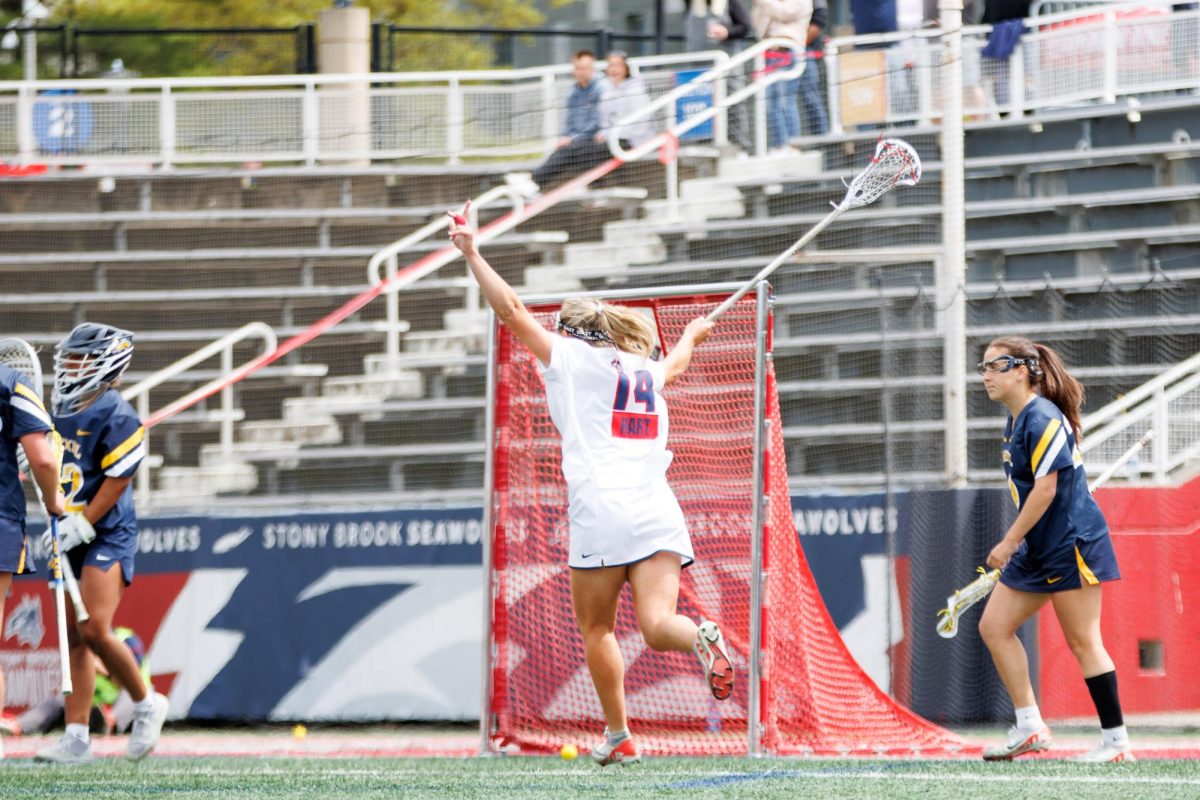Sarah Bielski’s concern for the institutional interior space all started one day when she was approaching her father’s medical office building, where she had worked on and off after school and during her summer vacationsup until college. The office she had worked in was located underground and wassecluded from the rest of the building. This was the first time after six monthsthat she had seen it.
‘It was the most bizarre thing,’ said Bielski. ‘I never had one before. My body just ceased up and began to remember what it felt like to be in the space. I almost couldn’t go in.’
Sarah Bielski, a second year Masters student at Stony Brook University’s Graduate Art Department, reminisces on how her fascination of institutional spaces began. Her show, ‘A Visual Response to the Institutional Interior’,is taking place at the Graduate Gallery at the Melville Library.
The show displays three large one-point perspective drawings, done in charcoal,of spaces found in institutional buildings. Two of these depictions were spacesfound above the dropped ceiling of her actual studio.
‘[Stony Brook University] had a three year program, which I really liked,it had beautiful studios and I could also teach,’ Bielski said.
Bielski teaches painting classes at Stony Brook, this semester being her thirdtime to teach the Painting I class. For Bielski, teaching not only helps paythe bills, but it also facilitates her to improve her skills.
‘I need to do it, it compliments everything I do in my studio,’ Bielskisaid. ‘They teach me so much. Just by watching people learn how to be visualhelps me learn how to be more visual. I can’t imagine not doing it.’
Even when she does teach painting to her students, Bielski, chooses to draw those environments that are displayed in her show.
‘I would like to prefer to use paint,’ Bielski said. ‘But Ican get a lot further, faster with drawing. I like the immediacy of it. My subject matter is so narrow in value, that drawing is a useful tool. I can cover a lotmore ground conceptually and formally.’
Bielski believes that an interior space acts as an arena where dramas betweenhuman beings take place, but also drama between human beings and the environment take place, essentially where the built environment takes place.
So when entering the campus she submerged herself in these spaces. ‘I tend to paint my environment,’ Bielski said. ‘Once I got here I wasin an institutional space and I started to address it.’
Her works are not only depictions of her environment, but for Bielski, it has far reaching social implications as well.
‘I think art should have social concerns,’ Bielski said.
Bielski believes that her body in some way is hyper sensitive to environmental conditions, for whenever she finds herself in this type of space she immediately becomes anxious.
In Bielski’s show, she deals with the implications the dropped tiled ceiling has on people. According to the artist, when fluorescent lights were developed, it was found that these lights could light an ample amount of space. In addition to this they were also very economic, so building designers decided to drop the ceilings down, so they could accommodate all the heating and cooling inthe ceiling, creating more room for more bodies to carry out more work.
‘Psychological studies show that when you drop a ceiling down it makes humans feel more compressed, more anxious,’ she said. ‘Humans preferto have more room above their heads, a higher ceiling.’
This made her think of how it crops people’s lives when taking away fromthese spaces and how the room compromises ones well-being. She supposes thatmaybe the anxiety and depression in other people’s lives are because of these conditions, where one would never really relate it to the space.
Even with this awareness, Bielski does not want her pieces to have activist overtones, only to make people conscious of it. How buildings have abandoned the aesthetic and had become banal, and for Bielski, capitalistic and totalizing.
‘It not the strongest threat, but it is an important threat and it’s there,’ Bielski said. ‘I have a hard time to believe that I’m the only person who is bothered by this and I hope I’m not because then there’s a lot of vanity in that. There’s too much vanity in that forme.’












